| Soviet Anod A108 Series Dekatron Tubes (A107, A108, A109) | |
| Written by AnubisTTP on 2008-12-06 |
|
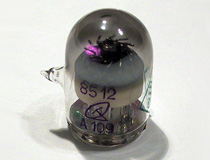 |
Devices included in this entry:
Soviet A107 selector (12-pin miniature base)
Soviet A108 selector (12-pin miniature base)
Soviet A109 selector (12-pin miniature base; pictured in thumbnail)
The Soviet made A107, A108 and A109 share a highly important pedigree, they are the smallest dekatron part numbers in the world. Packaged in the same envelope as an IN-2 nixie tube, each is tinier than even Elesta's minuscule ECT-100 selector. The unusual qualities of the A-107, A-108 and A-109 do not end with size however. Unlike most dekatrons which count in base-10 increments, these units are base-5 counting tubes. The structure comprises ten shaped cathodes that can either act as output cathodes or guides, these units are unique among the world of dekatrons in that every cathode is brought out to a separate pin, half of the cathodes must be tied together to form a guide for counting operation. The shaped cathodes limit the tube to unidirectional counting, but maximum counting speeds are quite respectable; the neon-helium filled A-108 can count at up to 10kHz and the mixed gas A-109 will count at up to 100kHz, whereas the high speed A107 can count at a blistering 1MHz. The A-107 has an additional oddity, it is not a direct view device. The A-107's counting loop is completely covered with opaque silvering and the glow transfer can not be seen under normal light levels.
The Soviets did have a scheme to use this tube as a base-10 counter, in which no cathodes were designated as outputs. To pull it off, even and odd number cathodes were each fed half of an out-of-phase signal from a flip-flop circuit. Standard dekatron offset guide pulses will not work for this, the signals on the even and odd numbered cathodes must be exactly 180 degrees out of phase for the tube to count correctly. Such a system was highly impractical, as it required a transistor across every cathode that needed to double as an output as well as the active components necessary to generate the flip-flop signal.
Soviet Dekatron Datasheet (PDF)
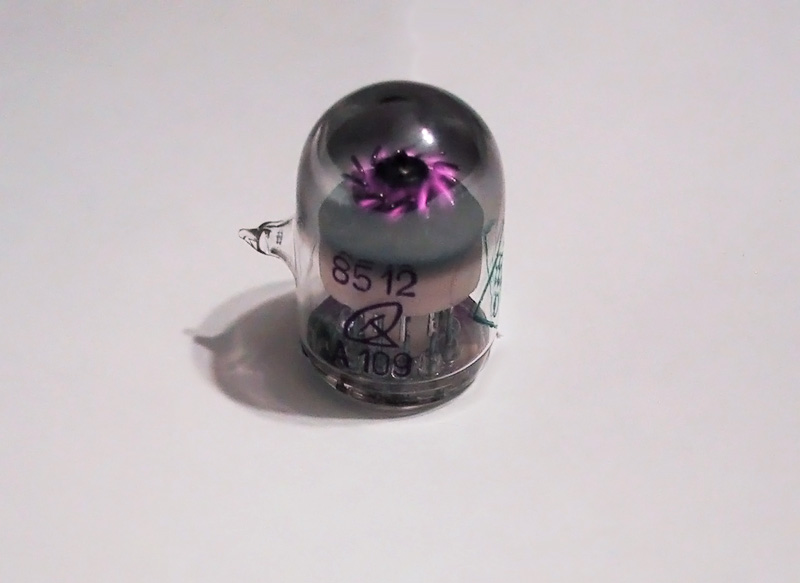
Soviet A-109 counting tube. The A-109 (along with the A-108 and A-107) is the smallest dekatron ever made.
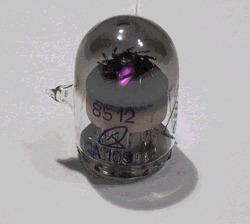
The A109 is a single pulse tube designed to be driven from a flip-flop circuit.
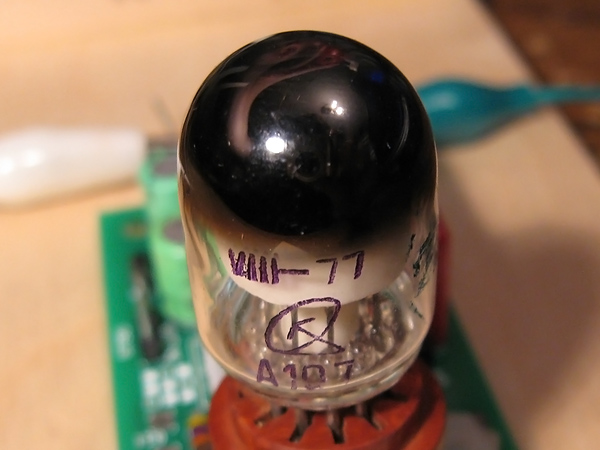
Soviet A-107 counting tube in operation. Note that the glow transfer is completely invisible under normal lighting conditions, the A-107 is not a direct-view counter and the counting loop is covered with opaque silvering.
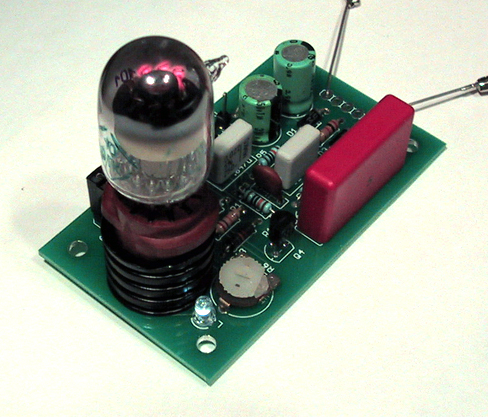
Soviet A-108 counting tube mounted in a YS-650 demonstrator module.
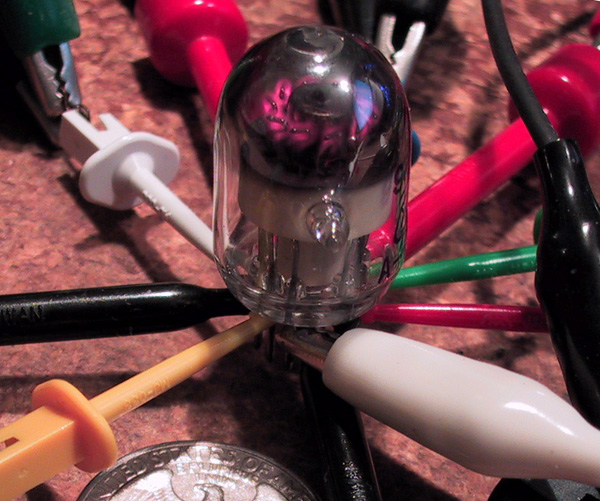
Soviet A-108 counting tube in operation.
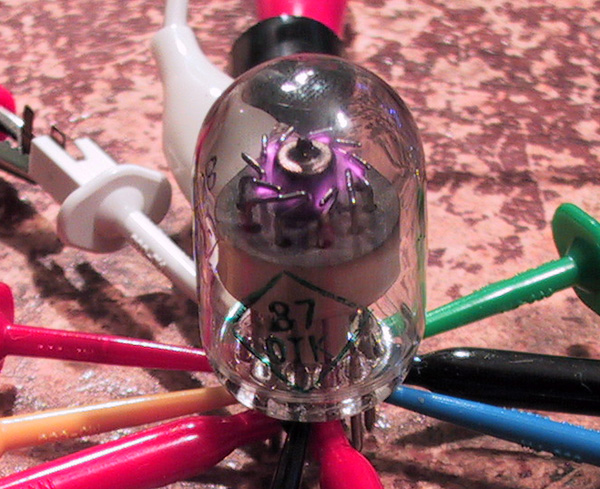
A-109 counting tube in operation. It should be noted that getting the mixed-gas A-109 tube to count reliably is no easy task; the A-108 is a much more stable tube for most applications.
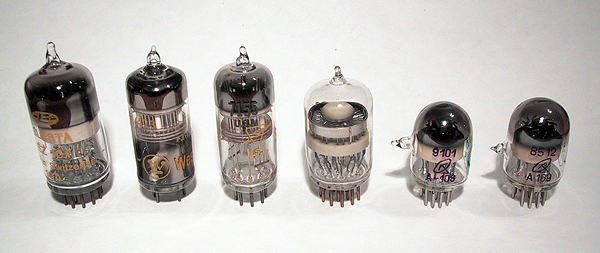
Miniature dekatron size comparision. Part numbers from left to right:Elesta EZ10A, Westinghouse 6879, Sylvania 7155, Elesta ECT100, Soviet A108, Soviet A109.
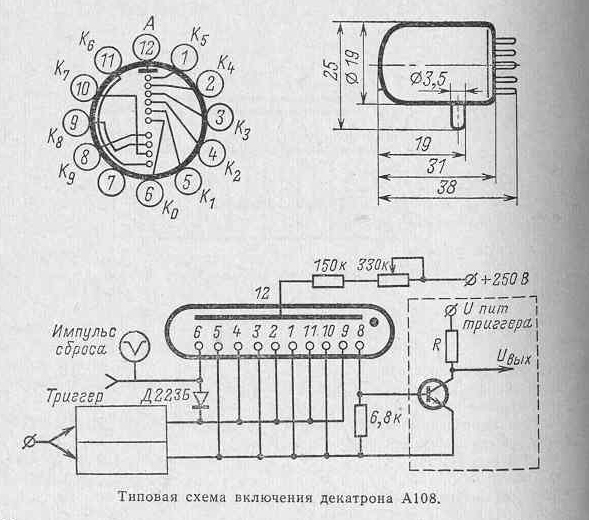
This is the recommended Soviet circuit to operate an A-108 or A-109 as a base-10 counter. Even and odd cathodes are driven from a flip-flop such that only a single cathode is lit at a given time.
 Return to Dekatron Glow Transfer Counting Tubes
Return to Dekatron Glow Transfer Counting Tubes











 Return to Dekatron Glow Transfer Counting Tubes
Return to Dekatron Glow Transfer Counting Tubes